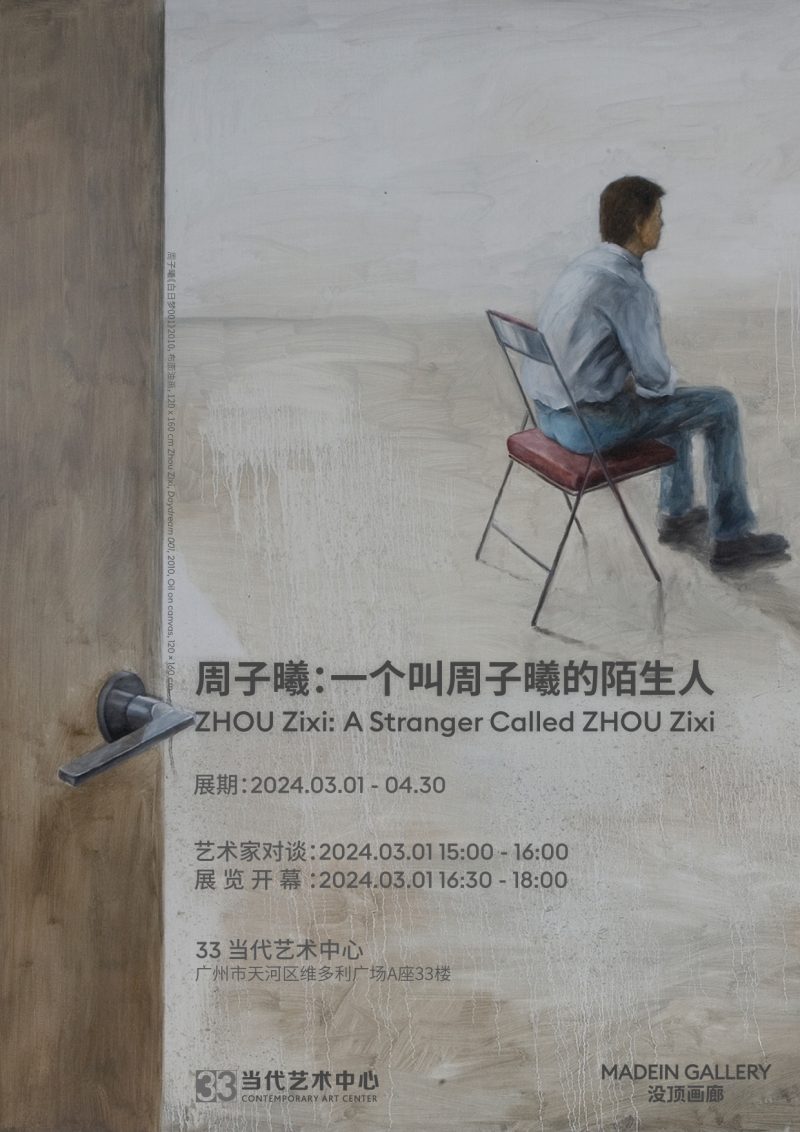我不敢肯定我有怎样的价值——对话周子曦
2024.2.28
在2020年与徐震、陆平原进行的深度对话中,周子曦谈及他在时代的更迭、艺术的演进和科技惊人发展的当代背景下,如何思考自身与绘画、与世界的关系,以及如何诉诸画面、如何逐渐构建了个性化的表达。
Jointly with MadeIn Gallery, Guangzhou 33 Contemporary Art Center is pleased to present “A Stranger Called ZHOU Zixi”, the solo exhibition of artist Zhou Zixi on March 1st, 2024. Over the past three decades, Zhou Zixi’s landscapes and figures have become the last barrier guarding the marginalized and forgotten human spirit. The tranquil, almost restrained nature of series such as “Lost Landscape” (2014-), “Debris Flow” (2019-), and “Black Hole” (2021-) suggests a suffocating mystery ceaselessly lingering even in the wilderness.
“A Stranger Called ZHOU Zixi” consists of 13 paintings that embody the signature “flowing” style of Zhou’s paintings. He intentionally paints in a sketch-like manner, using large quantities of oil and thin pigments, to loosen the bonds of the complex “environmental drama” created with his brushes, and thus arrive at an unpredictable, even destructive, boundary. The works, despite their different content, focus on uncanny and surreal dreamscapes: theaters and churches flooded with debris flow, black holes suddenly appearing in the wild and urban lands, and a glass suddenly pouring itself out in the mid-air of the living room in the late afternoon… Zhou’s different series conspire to emphasize the impossibility of replicating a succession of chance events.
“Strangers” in the exhibition title serves as a double-entendre, first referring to the fact that Zhou Zixi’s name is not familiar to the contemporary art scene in the Guangzhou region; As a middle-aged man who chose to move to Spain to start a new life, the word “stranger” is also a reflection of Zhou’s personal reality. Here, Zhou connects with the characters and scenes in his paintings: the deer standing alone on a branch, the library as a symbol of human civilization, or the middle-aged man leaping into the flood… The viewer is endowed with a direct or semi-aerial view in front of the paintings, which reinforces the effect of detachment similar to the indifference in the novels of the French writer Houellebecq.
However, despair is merely an undertone of Zhou’s painting, on the contrary, the artist’s insistent care for the here and now of life is weaved within, offering a warm undercurrent for us to grasp. Decay and renewal, wreckage and growth co-exist in the images, where the past and the future collapse embracing each other. The pictorial world is thus filled with allegory, evenly born by scenes of hope and loss, romance and mystery. Zhou confesses that even in his middle age, he still cannot stop confronting and questioning the problems of our world, among which painting is his way of thinking and responding silently. It is through this solicitude that his work substantiates a tension that transcends the content and the medium of painting.
